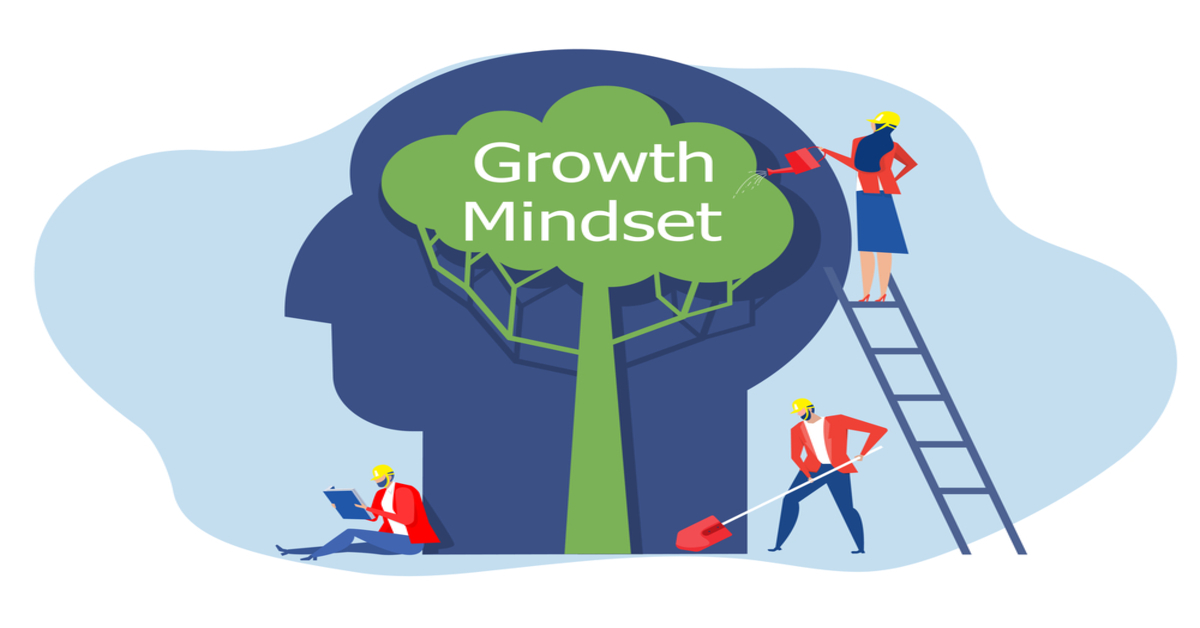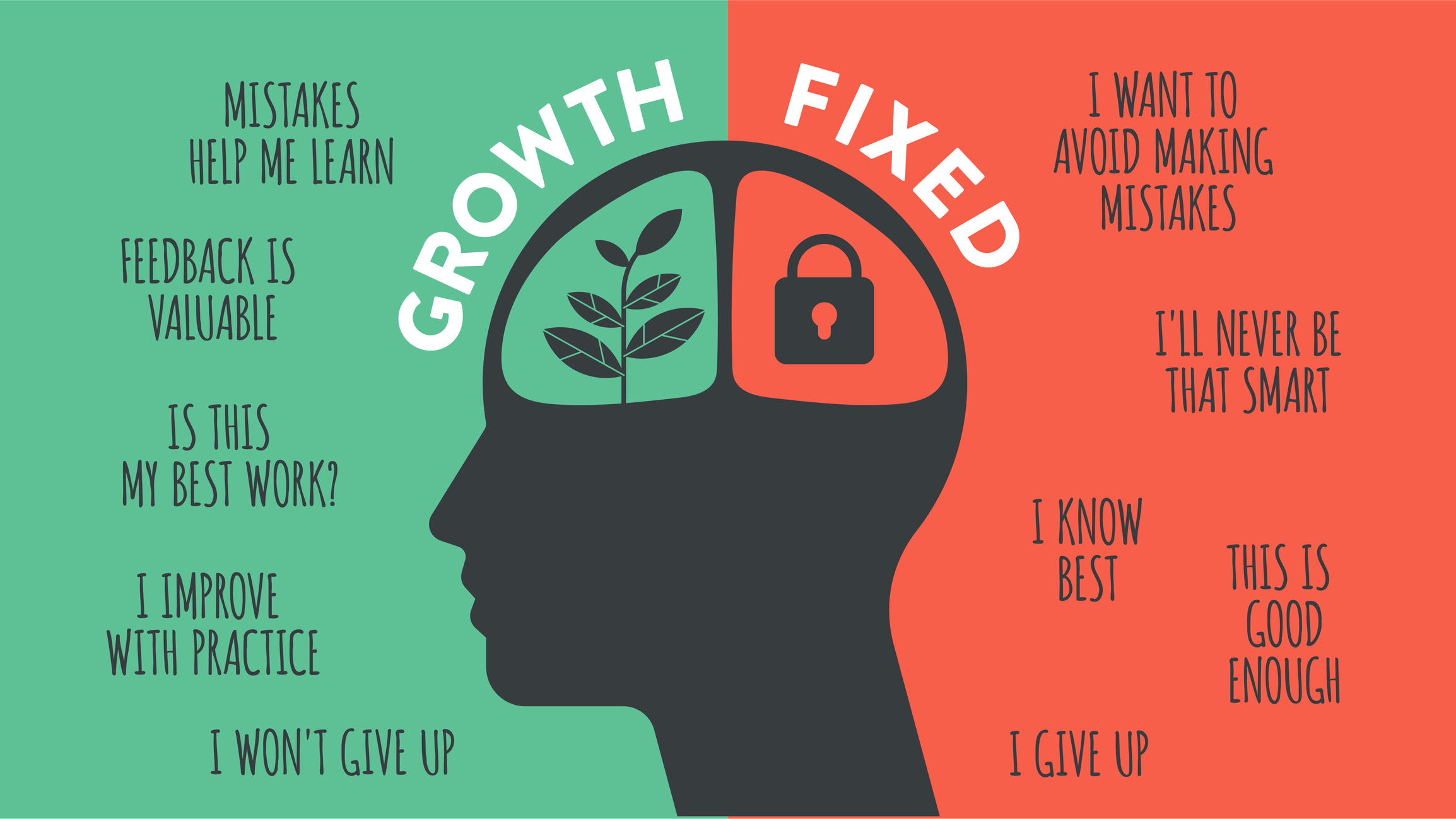
Growth mindset & guidance for applying in teaching & learning
Imagine a classroom where challenges are met with excitement, mistakes are seen as learning opportunities, and the journey of learning is valued as much as the destination. This transformative environment is fostered by a powerful concept: the growth mindset.

Growth mindset
Growth mindset is a powerful belief system that views intelligence and abilities as not fixed, but rather as qualities that can be developed through effort and dedication. It’s the opposite of a fixed mindset, which believes intelligence is something you’re born with and can’t change.
Here’s what a growth mindset looks like:
- Challenges are opportunities to learn: People with a growth mindset see difficulties as stepping stones to improvement. They believe that with hard work and perseverance, they can master new skills and overcome obstacles.
- Effort is key: They understand that success requires dedication and continuous learning. They embrace the journey of learning and celebrate the effort put in, not just the final outcome.
- Mistakes are valuable learning experiences: Setbacks are seen as opportunities for growth, not failures. They analyze mistakes to understand what went wrong and use that knowledge to improve in the future.
- Learning never stops: Those with a growth mindset believe they can always keep growing and developing their knowledge and skills. They are lifelong learners who are curious and enthusiastic about exploring new things.
Benefits of a Growth Mindset:
- Improved academic performance: Students with a growth mindset are more likely to persist through challenges, leading to better grades and a deeper understanding of concepts.
- Increased resilience: They develop the perseverance to bounce back from setbacks and keep trying.
- Enhanced creativity and innovation: They are not afraid to take risks and explore new ideas, leading to more creative solutions.
- Greater sense of accomplishment: They find satisfaction in the learning process itself, not just the end result.
- Lifelong love of learning: They are more likely to embrace challenges and continue learning throughout their lives.
Growth mindset examples

Here are some well-known examples of growth mindset from various fields:
1. Michael Jordan and Basketball:
- Challenge: Despite being cut from his high school basketball team, Michael Jordan famously embraced the challenge. He practiced relentlessly, honed his skills, and eventually became one of the greatest basketball players of all time. This story exemplifies how perseverance and a growth mindset can turn setbacks into stepping stones for success.
2. J.K. Rowling and Overcoming Rejection:
- Challenge: J.K. Rowling’s now-iconic Harry Potter series was initially rejected by multiple publishers. However, she didn’t give up. Her belief in her work and her growth mindset fueled her persistence, ultimately leading to the global phenomenon we know today.
3. Carol Dweck and the Power of Yet:
- Originator: Psychologist Carol Dweck, who pioneered the concept of growth mindset, often uses the phrase “not yet” instead of “not.” This subtle shift emphasizes that a skill or knowledge may not be acquired yet, but it can be learned with effort.
4. Businesses Embracing Innovation:
- Continuous Improvement: Many successful companies foster a growth mindset by encouraging experimentation and embracing failure as a learning opportunity. This allows them to stay innovative and adapt to changing market demands.
5. Everyday Learners:
- Lifelong Pursuit: Anyone who takes up a new hobby, enrolls in a class to learn a new skill, or pushes themselves outside their comfort zone exemplifies a growth mindset. It’s the everyday pursuit of learning and self-improvement that truly embodies this powerful belief system.
These are just a few examples, and the beauty of a growth mindset is that it can be applied to any area of life. By believing in your ability to learn and grow, you open yourself up to a world of possibilities.
How to apply growth mindset in teaching & learning

A classroom fueled by a growth mindset transforms learning from a passive experience into an active journey of discovery. Here’s how teachers and students can work together to cultivate this powerful approach:
For Teachers:
- Shift the Focus: Move away from a solely test-oriented approach. Focus on fostering curiosity, encouraging exploration, and celebrating the “learning process” itself.
- Embrace Growth Mindset: Model a growth mindset by acknowledging your own learning journey and celebrating mistakes as opportunities for improvement. Students benefit from seeing their teachers embrace challenges and learn from setbacks.
- Differentiate Instruction: Cater to different learning styles and paces. Provide opportunities for students to explore their interests and learn independently. A growth mindset classroom celebrates the unique learning journeys of each student.
- Focus on Mastery: Move beyond rote memorization and encourage students to truly understand concepts. Help them develop a love of learning for its own sake, not just for grades.
- Create a Safe Space: Encourage questions, exploration of new ideas, and respectful debate. Let students know it’s okay to make mistakes and that learning is a collaborative process. A safe and supportive environment fosters a growth mindset.
- Celebrate Effort and Progress: Recognize and celebrate the effort students put into learning, not just the final outcome. This reinforces the idea that dedication and perseverance are key to success.
For Students:
- Embrace Challenges: Don’t shy away from difficult problems. See them as opportunities to learn and grow your skills. A growth mindset student views challenges as stepping stones to mastery.
- Set Goals: Identify areas you want to improve in and set achievable learning goals for yourself. Setting goals provides a sense of direction and motivates students to persevere.
- Take Ownership: Be proactive in your learning. Seek out resources, ask questions, and don’t be afraid to experiment. Growth mindset students take charge of their learning journey.
- Reflect on Your Learning: Take time to consider what you’ve learned and how you can use it. Reflection helps solidify understanding and identify areas for further growth.
- Learn from Mistakes: Don’t get discouraged by setbacks. Analyze your mistakes and use them as stepping stones for improvement. Growth mindset students see mistakes as valuable learning experiences.
- Develop Growth Habits: Read widely, explore new hobbies, take online courses, and surround yourself with people who inspire you to learn. Growth habits fuel a lifelong love of learning.
- Celebrate Your Achievements: Acknowledge and celebrate your learning progress, no matter how small. Taking the time to acknowledge accomplishments reinforces the positive aspects of learning.
See also: Roles of a Teacher in Teaching: What, Why, When and How?
